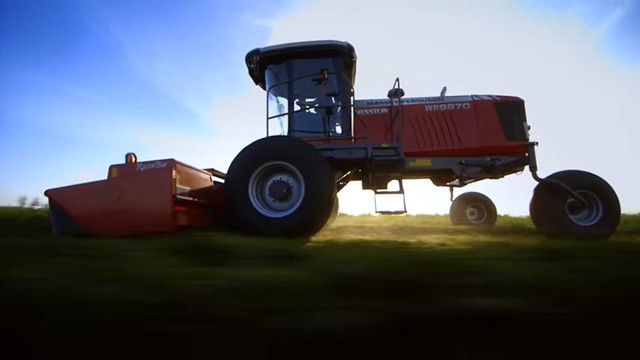http://e-info.org.tw/node/116686
農業機器人會除草、收割 專家:環境衝擊更低
文字大小
25 1 Share1
本報2106年6月29日綜合外電報導,姜唯編譯;蔡麗伶審校
機器人也能幫忙種田?你沒看錯,大片農田、大型牽引機、大量化學肥料——過去幾十年的農業發展完全建立在規模經濟上,但是這樣的農業途經或許即將走到極限——專家在上週英國皇家學會的研討會上指出,輕量機器人、衛星資料和雷射殺草機將成為未來主流農法,大幅改善能源效率。
模擬機器人幫忙農事的情景。圖片來源:AGCO。
2012年,農業碳排佔全體碳排11%,僅次於能源產業。由於世界各國政府都簽署了巴黎氣候協議,所有產業都得在減碳上繃緊神經。
英國哈珀亞當斯大學教授布雷克莫(Simon Blackmore)估計,耕作消耗的能量有90%花在修復大型機具造成的損害。
大型牽引機擠壓出土壤中的空氣和水,增加洪災風險,也減少了生產力。傳統的解決方案是犁田。布雷克莫說:「最好的辦法是不要對土壤做任何事,讓蟲子做好牠們的工作。」
布雷克莫在國家精準農業中心的研究團隊,正在開發壓力較小的農業機器人原型。舉例來說,無人機不用再大面積噴灑殺草劑,而是把殺草劑「微點」植入草中,減少99.99%的用量。一台五瓦的雷射機就可摧毀雜草。
收割方面,機器人可以只選擇成熟的作物收割,避免浪費。目前有20至60%收成的作物因為不符超市的規範而被丟棄。
這些技術距離普遍商業使用還有一段距離,但布雷克莫認為,環境意識和競爭壓力會驅動技術的推廣。
同時,農民已經開始利用高解析度衛星資料精確地噴灑農藥。日內瓦地球觀察集團(Group on Earth Observations)總裁萊恩(Barbara Ryan)說,從衛星照片可以看出土壤濕度和養分,「農人可以依此決定每塊土地要使用的農藥和肥料多寡,節省花費、減少用量。」
要餵飽成長中的人口,永續集約農業將是關鍵。布雷克莫並未計算出新技術能減少多少碳,但他強調技術的目標是減少浪費:「作物生產必須更加有彈性、更有效率。」
Can robots cut farming’s carbon footprint?
Drones, satellites and weed killing lasers could slash the energy used to grow crops, say experts

Mock-up of a robot selectively harvesting lettuces only when they are big enough (Pic: AGCO)
Big fields, big tractors, big chemicals: farming developments over the past few decades have been all about economies of scale.
That approach is reaching its limits, farmers heard at a Royal Society event on F1riday.
The future of agriculture is all about ultra-lightweight robots, satellite data and laser weed killers – and it could be far more energy efficient.
Simon Blackmore, professor at Harper Adams University, UK estimates 90% of energy used in cultivation is needed to repair the damage done by huge machines.1
Giant tractors compact the earth, squeezing out spaces for air and water, increasing flood risk and reducing productivity. The traditional solution is to plough the field.
“The best thing to do with soil is to leave it alone,” says Blackmore: “Let the worms do their work.”
At the National Centre for Precision Farming, his research team is developing robot prototypes that exert far less pressure.
Instead of spraying entire fields with herbicide, drones can apply microdots directly onto the weed, reducing the volume needed by 99.99%. A 5W laser can zap unwanted plants.
When it comes to harvest, robots could select only the ripe crops and avoid waste. At present, 20-60% of harvested crops are thrown away because they don’t meet supermarket standards.
These technologies are some way off widespread commercial use, but Blackmore is convinced that environmental and competitive pressures will drive demand.
“Tractor manufacturers aren’t interested [in robotics] because it’s too disruptive. There will be agricultural robots, but whether they will be in two years’ time or twenty years’ time we will have to wait and see.”
Meanwhile, increasingly high resolution satellite data is already helping farmers to be more selective about where they spray.
Photos from space show how moist and nutrient-rich different parts of a field are, explained Barbara Ryan, director of the Geneva-based Group on Earth Observations.
“With those images, farmers are now able to differentiate their applications of pesticides or nutrients. If you can use lower quantities, you are spending less money and get the same kind of return.”
Responsible for around 11% of global greenhouse gas emissions in 2012, agriculture takes a back seat to energy in the climate debate.
Since governments signed up to ambitious international goals to curb global warming in Paris, all sectors will come under more scrutiny.
As the number of mouths to feed grows, sustainable intensification is the name of the game.
Blackmore has not calculated the potential emissions savings from his automated vision of the future, but the idea is to slash waste.
“Crop production has to become a lot more flexible and efficient,” he said.


沒有留言:
張貼留言